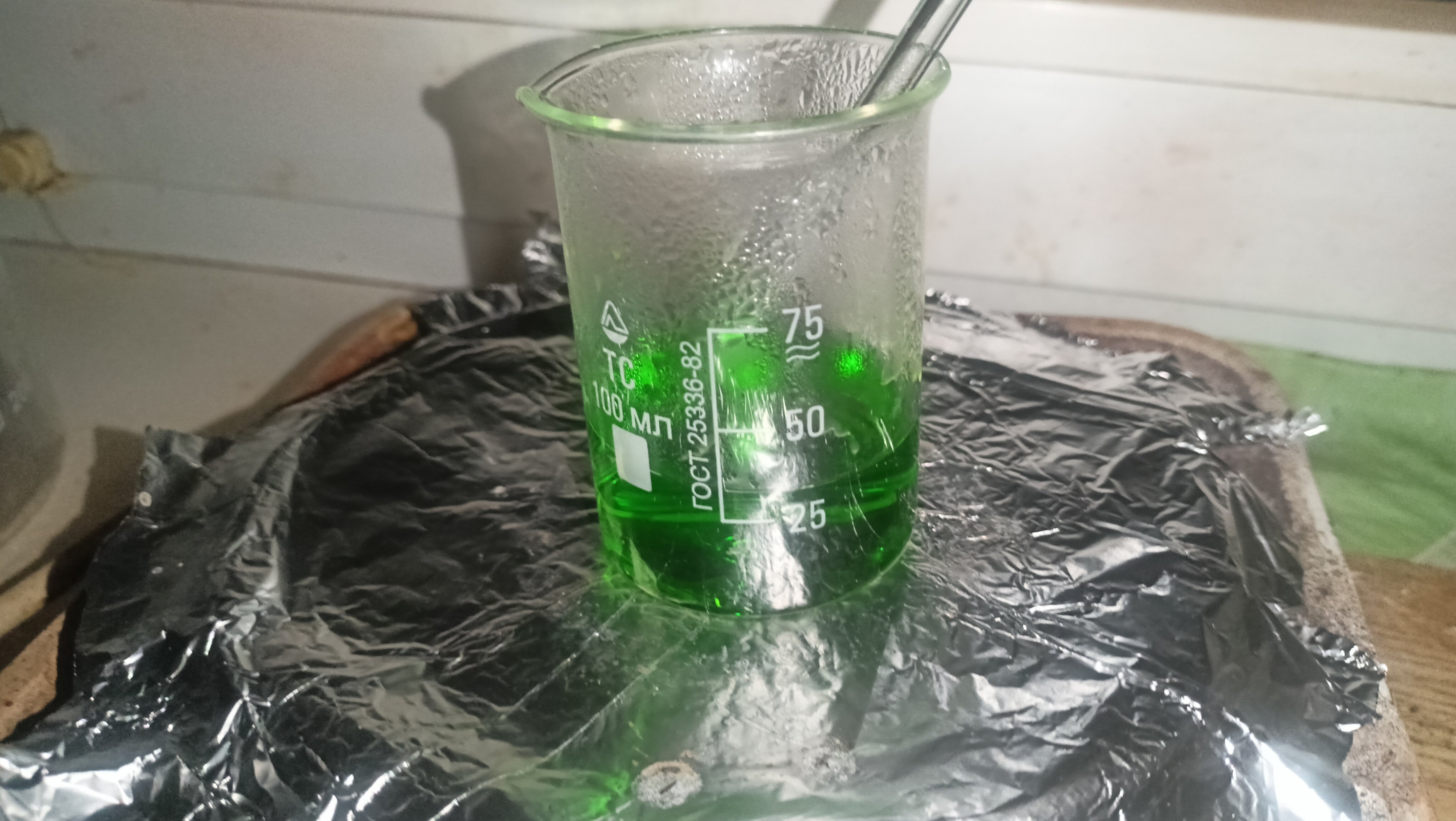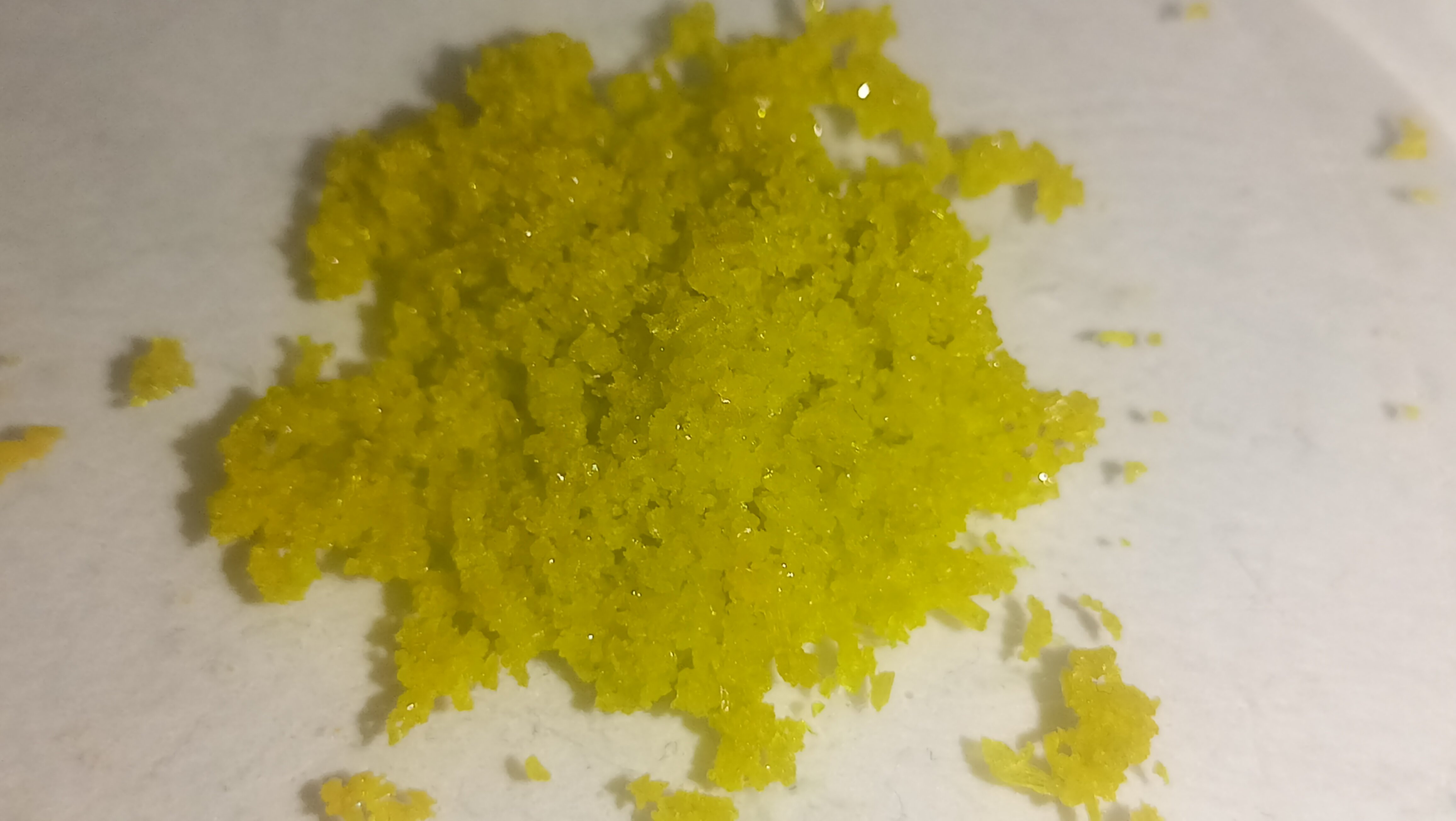This is a quick one although some things went weird during the synthesis. Supposedly this compound is thermochromic but this demands further testing! The procedure is based on a 1992 paper by Riley et al.
In a 100 ml beaker 0.86 grams of piperazine (0.01 mol) were dissolved in 15 ml of distilled water acidifed with 6 ml of 15% hydrochloric acid. 1.07 grams of Copper (II) Chloride Dihydrate were added to the resulting solution of piperazinium dichloride, at which point a precipitate formed and an attempt was made at dissolving it by adding extra hydrochloric acid and distilled water up to 50 ml (most likely detrimental and annoying to remove, will be skipped next time). The precipitate did not dissolve in the extra HCl and was filtered off, and a green solution free of any cloudiness was acquried.

This solution was slowly boiled down on a hotplate, with colour of the solution changing to a darker green. When the solution was reduced to around 8 ml, it was removed from heat and placed in the freezer. The resulting yellow-green crystals were filtered off and dried on a schott funnel. The resulting solution was put aside and slowly evaporated at room temp.

Extra Results
Now, let’s focus on the extra solution that we set aside to evaporate. After a while, what we got is a mix of green crystals on the edges, yellow crystals in the middle of the dish, with some brown solid in-between them. These are actually different compounds! According to Riley (1992), the green (pipzH2)2[CuCl4]Cl2 * 3H2O compound actually has extra non-bonded chloride ions, and adopts a different geometry from the yellow (pipzH2)[CuCl4] * 2H2O compound.
